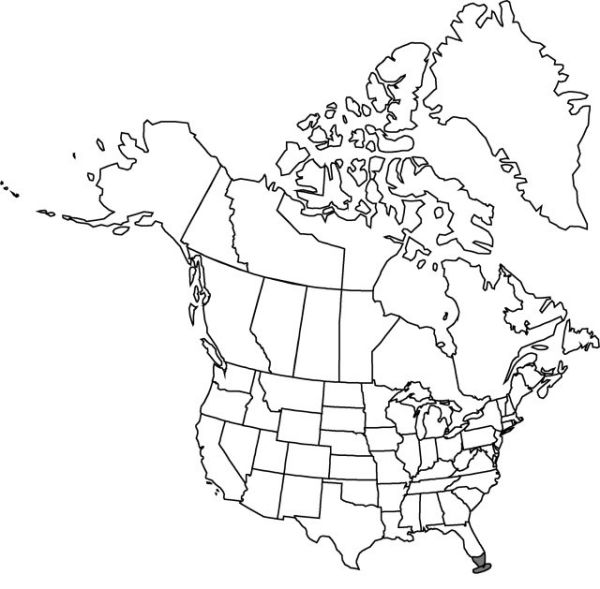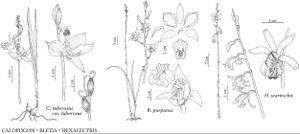Bletia purpurea
Mém. Soc. Phys. Genève 9: 97, 100. 1841.
Plants to 180 cm. Roots numerous, 1–1.5 mm diam. Stems: pseudobulbs ovoid, 2–4 cm diam. Leaves: blade linear to narrowly elliptic-lanceolate, 20–100 × 1–5 cm, apex acuminate. Inflorescences 25–170 cm; floral bracts ovate-triangular to ovatelanceolate, 2–9 mm, apex acute to acuminate. Flowers 3–80, mostly pink, rosy purple, or deep purple, rarely almost white; sepals spreading; dorsal sepal oblongelliptic to ovatelanceolate, 15–26 × 5–9 mm, apex subobtuse to acute; lateral sepals obliquely ovate-oblong to elliptic-oblong, 12–20 × 5–8 mm, apex acute to acuminate; petals erect, forming hood over column, oblong-ovate to elliptic or oblong-lanceolate, 12–21 × 7–11 mm, apex obtuse to acute; lip adnate to column-foot, purple-veined with dark margin especially distally, cordate to ovate, 3-lobed, 10–18 × 8–14 mm, middle lobe recurved, suborbiculate, truncate to deeply emarginate, margins undulate-crenulate, lateral lobes incurved, base rounded, apex triangular-obtuse; disc lamellae yellow, 5–7; column white or greenish, clavate, 8–12 mm; column-foot present; pedicellate ovary slender, 9–18 mm. Capsules erect to suberect, 2–4.5 cm × 8–10 mm. 2n = 60 (as B. verecunda from Mexico).
Phenology: Flowering Dec–May, sporadically all year.
Habitat: Pinelands and hammocks, in humus over limestone, or in swamps on logs, stumps, or base of cypress trees above high water level
Elevation: 0–20 m
Distribution

Fla., Mexico, West Indies, Central America, South America
Discussion
Selected References
None.
